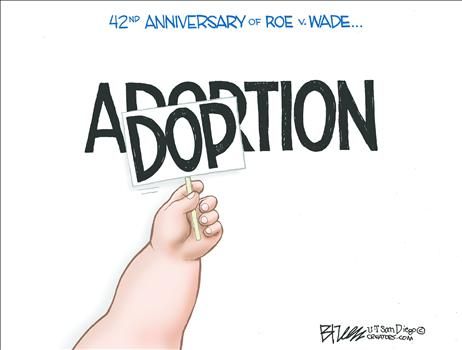http://townhall.com/columnists/johnstossel/2015/06/10/green-lies-n2010233/page/full [AS I SEE IT: Animal rights activists have a way of depicting anything that intrudes on the natural state of things as evil. They may have a point in some instances but the problem becomes when they start to color what is going on in order to advance their agenda, no matter how well-intentioned. Though I've never seen it, I've always been suspicious of the movie "Blackfish" since it has gotten so much endorsement from the mainstream press without my rarely hearing of any consideration of what the other side says the full picture. (Since I don't receive cable, I had no idea CNN(surprise, surprise) was championing the film.) It's not like I don't love animals. I love every opportunity to be with one. And I really don't believe it's been shown that animal conservation groups like SeaWorld only have ill intentions towards animals. The TRUTH is certainly not as black and white as films like "Blackfish" would attempt to paint things. - Stan (Don't miss tomorrow's follow-up article, "The Anti-Science Left."]

Millions go to SeaWorld to learn more about sea life and get closer to killer whales. But fewer go now because the documentary "Blackfish" exposed what one reporter called "the darker side" of SeaWorld.
The movie, which CNN bought and ran over and over, tells how greedy businessmen take baby whales from their mothers and imprison them in small aquariums, where the frustrated animals are a threat to each other and their trainers. "All whales in captivity have a bad life," says a biologist in the film. "They're all psychologically traumatized."
"Blackfish" is persuasive. Watching it made me agree with the protesters who shout, "SeaWorld is synonymous with cruelty!" SeaWorld wouldn't talk to CNN, but they did talk to me. I will be showing their responses on Fox News this weekend.
I asked SeaWorld why they separate whales from their mothers. "We haven't done that in 35 years," says Kelly Flaherty Clark, SeaWorld head trainer. "We have no plans to do it again, and the film implies that we're doing it yesterday."
SeaWorld says much of "Blackfish" is deceitful. "The things they describe just didn't happen."
"Eighty percent of the whales that we care for were born right here," says head veterinarian Chris Dold. "The key difference between what our whales experience and what killer whales in the wild experience is the fact that ... our trainers work with them every day."
I was most disturbed by a "Blackfish" scene that plays the mournful cry of a mother whale whose baby was taken from her. But it turns out the "baby" was an adult with kids of her own. "Blackfish" faked the scene by adding "sound effects that aren't even appropriate to a killer whale."
Blackfish also claims captive whales' droopy dorsal fins indicate that the whales are miserable. But whale expert Ingrid Visser says killer whales in the wild have collapsed dorsal fins, too.
The director of "Blackfish" and others who appear in the film would not talk to me, but biologist Lori Marino, who'd said that "all whales in captivity have a bad life," did. I pointed out that life in the wild is rough, too -- there's competition for food, sex, life itself. She answered, "these animals evolved over millions of years to be adapted to the challenges of the wild, not with living in a concrete tank. ... They need space ... and a social life."
SeaWorld claims its whales are "happy." But as "Blackfish" points out, "we can't ask the whales."
Dold replied, "While I may not know what my dog is thinking, I certainly know that he's happy and that we have a good relationship."
There have been moments when that human-whale relationship wasn't good. One whale drowned a SeaWorld trainer. But Clark says there's no evidence that the whale's behavior meant that he was frustrated because he lives in a tank.
Finally, "Blackfish" claims that captive whales die young. But Dold points out, "We have a 50-year-old whale living at SeaWorld. ... (O)ur whales' life parameters are the same as whales in the wild." Government research confirms this.
It's romantic to fantasize about freeing whales so that they can frolic in the ocean. That probably wouldn't work out very well. After the movie "Free Willy" ran, the whale depicted in the film (SET ITAL) was (END ITAL) set free. But wild whales wouldn't accept him in their pods. Willy kept returning to shore to be near people. He let children ride on his back. Willy died not long after he was set free.
It's hard to think rationally when animals tug at our heartstrings.
Lori Marino says it's cruel to imprison whales in tanks where they "have to do stupid pet tricks." I see her point, but marine parks and zoos are often the only way people learn about nature, and ticket sales pay for education and conservation efforts. SeaWorld alone has helped rescue 25,000 animals.
I don't presume to know if it's moral to keep animals in captivity. But I do know that the activists distort the truth. I'll give more examples in my "Green Tyranny" TV special Sunday (6/14) on Fox News at 9 p.m. (EDT).
[bold and italics emphasis mine]
John Stossel is host of "Stossel" on Fox News and author of "No They Can't! Why Government Fails, but Individuals Succeed." For other Creators Syndicate writers and cartoonists, visit www.creators.com






No comments:
Post a Comment